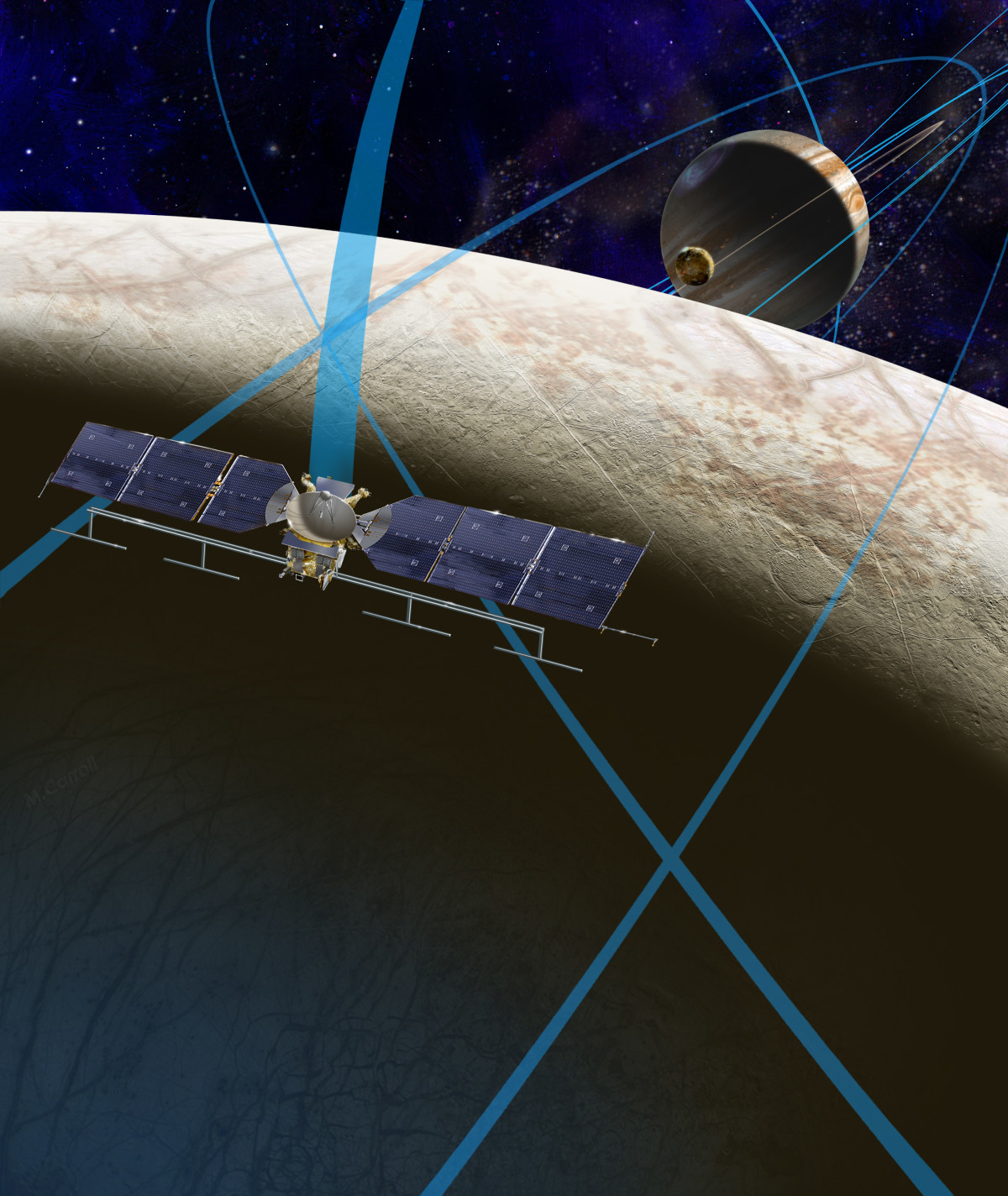When NASA sends a new probe to Europa, the Johns Hopkins Applied Physics Lab will have two devices onboard.
NASA is sending a probe to Jupiter’s smallest moon after evidence collected on a previous trip suggested a vast saltwater ocean could lie beneath its icy shell. Where there is water, of course, it’s believed that there may be conditions for life.
The probe, which has yet to be named, is slated to carry out 45 flybys, getting as close as 16 miles to the surface of Europa.
Using its space savvy, JHUAPL managed to make the top nine out of more than 30 device proposals that were submitted to measure different aspects of the moon.
The Laurel-based lab is sending the following:
- Plasma Instrument for Magnetic Sounding (PIMS): According to APL, this device will measure the thickness of the icy shell and determine the depth and salinity level of any ocean that might be discovered below. The device takes measurements of plasma and magnetic currents that surround the moon.
- Europa Imaging System (EIS): This high-resolution camera instrument will be designed to provide up-close pictures of the surface of the moon, as well as topographic maps and color maps. It’s designed to take the detailed pictures during “fast flybys” amid Jupiter’s high-radiation belts, which have been known to damage space probes.







